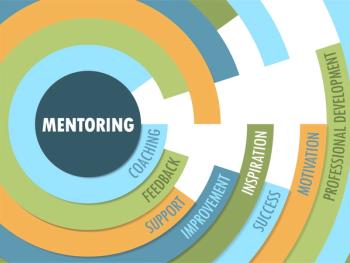
Effective Note-Writing: A Primer for Psychiatry Residents
An overview of various aspects of taking notes and suggestions for effective documentation.
RESIDENTS CORNER
Note-taking is an art and a skill that is perfected over one’s career. Many residents struggle with documentation during their training, and they might not have a good idea of what elements to focus on. While there are no shortcuts to cultivating this craft, many tips and considerations can be of enormous help for the trainees. In this article, we provide an overview of various aspects of taking notes and offer suggestions for effective documentation. We recognize that these considerations might not apply to all clinical settings.
Purpose of psychiatric documentation
Medical documentation serves numerous functions. It is valuable for psychiatry trainees to reflect on multiple concurrent goals in order to develop a comprehensive note-writing style. Listed below are some major reasons for medical documentation.
1) Record-keeping. Keeping track of clinical information for future reference and for the reference of future psychiatric/medical providers
2) Communication. Communicating with colleagues (other physicians, social workers, etc.), who will utilize the notes as a source of information and guidance. This is particularly important when one writes consultation notes and discharge summaries
3) Billing and reimbursement. Providing information to insurance companies and third parties that is adequate for billing and reimbursement
4) Medico-legal considerations. Securing oneself from a medico-legal perspective, for instance, by documenting an adequate suicide and violence risk assessment
Everyone structures their notes differently, based on how much consideration is given to each purpose. It is common to see very brief notes documenting minimal information needed for billing, and we also see very detailed documentation of medico-legal considerations but with little meaningful clinical information. An ideal note balances these different purposes.
Note-writing styles
Two broad categories of note-taking are the narrative style and the bullet-point/checklist style. Most notes are some combination of both.
The narrative style involves telling a coherent story. It is best suited for the history of present illness section. It provides a meaningful account of “what happened?” and “what is going on?”. The best way to document information is by considering what is the best way to tell that story. An advantage of the narrative style is that it provides a clear picture, but the disadvantage is that it can be lengthy and time consuming.
Bullet-point/checklist style essentially lists the relevant information and symptoms without much detail or context. For instance, listing the DSM-5 criteria for major depression indicates which criteria are reported by the patient. With the rise of electronic medical records (EMRs), there is a tendency to reduce as much of the note to checklists and bullets as possible. It is efficient, saves time, and is great for billing, but it can make notes clunky and difficult to read. Additionally, checklist features in electronic medical records may oversimply the nature of symptoms. An example would be a review of symptoms for mania in EMR which include “insomnia” without specifying that the insomnia should derive from a lack of need for sleep.
Again, an ideal note utilizes both styles in a balanced way that varies from one writer to another.
Challenges
•Time management.One of the primary challenges of note-writing to balance time on notes with time spent on patient care, and learning to do this efficiently. It is a life-long skill. Notes, especially documentations of initial evaluations, can be very time consuming. Improving typing speed, practicing typing while talking to the patient, and using dictation software are some measures that can be taken. However, patient care should not be compromised for efficiency, so make a point of asking permission to type (or take notes by hand) while you are talking to them.
Templates can also be created for particular situations to save time, which can then be utilized with modifications for specific patients. Some of the common useful templates for psychiatry include basic inpatient admission orders (in “the plan”); risk assessment; delirium management on the consult service; and a list of DSM-5 criteria that are commonly utilized (eg, generalized anxiety disorder, ADHD).
•Organization.Patients don’t always tell their story and talk about their symptoms in a straight line, and residents often worry that they may forget to ask important questions. It is helpful, especially for junior residents, to have a sheet with a note layout and jot down (or type) information in the relevant section of the history as one listens to the patient. Jumbled notes are often the result of a disorganized psychiatric interview. The patient should be gently guided through the interview without being too rigid. Depending on the context and prior knowledge of the patient, starting the interview with past psychiatry history or social history may be a more effective strategy than starting with history of present illness.
•Information selection.Residents can be overwhelmed with the amount of information obtained in a psychiatric interview. One may wonder what facts to include and exclude in the documentation process. While there is no easy answer, think of the clinical setting of the evaluation and the readers of the note. Assuming the recorded material is not an essential component of a psychiatric note, it can be helpful to ask: Is this information of diagnostic or prognostic value? Does this information impact treatment or disposition? If the answer to both is “no,” the utility of this information should be reconsidered.
•Brevity.The truth is that as clinicians we live extraordinarily busy lives and time is a precious commodity. Note-writing is one area where more is not always better. Lengthy notes can be taxing to sift through, and many clinicians may not read the note at all if it is very long. In the early stages of training, lean toward including rather than excluding details when there is uncertainty regarding relevance, as this will facilitate more productive discussion with supervisors and will lead to the development of better judgment in the future. As training progresses, however, residents should make an effort to write short snippets while still communicating the necessary and relevant information that needs to documented.
Guidelines
General tips for note-writing include the following:
• Brief patient quotes can be used as needed (eg, as evidence of thought disorganization, psychosis, or poor insight) but avoid writing down whole paragraphs of patient dialog
• Document what is required by the standard of care (eg, that one has reviewed the weight, lipid panel, HbA1c, and other pertinent metabolic parameters for patients on antipsychotics)
• Record the fact that risks and benefits of a proposed treatment were discussed with the patient. This is particularly true for an FDA black box warning, such as mortality risk with antipsychotic use in dementia, or possible suicidality with the use of antidepressants in children and adolescents
• Write down the rationale for medication changes
• Specifiers should be utilized when writing diagnoses. “Schizophrenia, multiple episodes, currently in acute exacerbation” and “major depressive disorder, recurrent, severe, non-psychotic, currently in partial remission” provide a lot of more meaningful information than simply listening “schizophrenia” and “major depressive disorder”
• Assessment should not simply be a summary of the history and mental status examination as many residents tend to do; assessment should be an opportunity to explain the thought process regarding diagnosis, disposition, and treatment
• Junior residents can initially struggle with writing a thorough mental status examination, as the appropriate use of psychiatric terms may not be initially apparent. Start out by simply describing what one is observing in the simplest of terms. A resident who is unsure if “labile affect” is an appropriate description for a particular patient can still confidently document that the patient was “uncontrollably tearful”
• There should be internal consistency in the notes. The diagnosis, assessment, and treatment plan should support each other
• Notes from other providers such as the emergency department physician or social worker should not be excessively copied and pasted. The relevant information should be summarized or it can be documented that a particular note was reviewed instead of copying it verbatim. When appropriate, be sure to record that something was extracted from a previous note
• Typing while talking to patients can be time-efficient but history can end up being disjointed and consist of comments the patient had stated. Take a few minutes after the psychiatric interview to organize the notes before signing off on them
• Avoid being overly vague, especially in initial evaluations. If one is documenting that the patient is expressing religious delusions, the delusions should be described
Note etiquette
Notes should not be a place to directly or indirectly complain about patients, team members, or consult teams. Other points to consider include:
• Avoid language that may be perceived as judgmental. Instead of documenting that the patient is “lying” or “being deceptive,” it would be better to state what is subjectively reported is at odds with or is inconsistent with what is observed by the team or by the family
• Providers should be mindful that patients can at some point request to see their own records. Or in case of a lawsuit, medical records can be read out loud in the court
• Unless part of the medical record, notes should not document intimate details of matters such as patients’ personal lives or details of abuse
Conclusion
An awareness of the purposes of psychiatric documentation styles can be help residents perfect their skills. An ideal note balances different purposes and styles. Effective writing requires overcoming a number of practical challenges, such as time management, narrative organization, relevant information selection, and brevity. Making use of the general tips discussed above and being mindful of note-writing etiquettes can be useful in overcoming these challenges.
Recommended Resource:
American Psychiatric Association's A Resident’s Guide to Surviving Psychiatric Training, 3rd Edition, is an online publication for resident and fellows, and includes detailed sections on note-writing. The guide can be accessed on APA’s website:
Disclosures:
Dr Aftab is a psychiatry resident and the Chief Resident for Education at Case Western Reserve University/University Hospitals Cleveland Medical Center. Dr Latorre is a psychiatry resident and the Administrative Chief Resident at Case Western Reserve University/University Hospitals Medical Center. Dr Nagle-Yang is the Associate Psychiatry Residency Training Director at Case Western Reserve University/University Hospitals Medical Center. The authors report no conflicts of interest concerning the subject matter of this article.
Newsletter
Receive trusted psychiatric news, expert analysis, and clinical insights — subscribe today to support your practice and your patients.

















